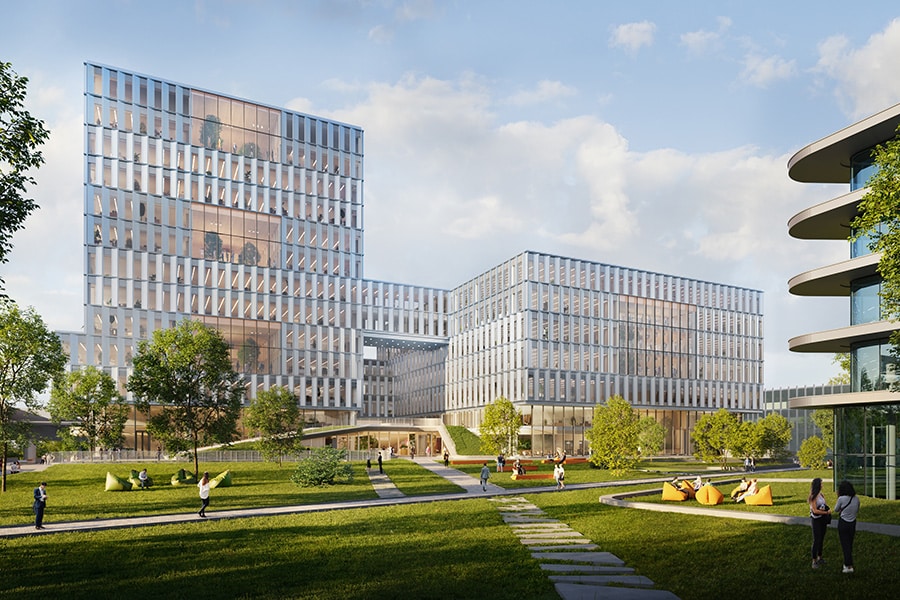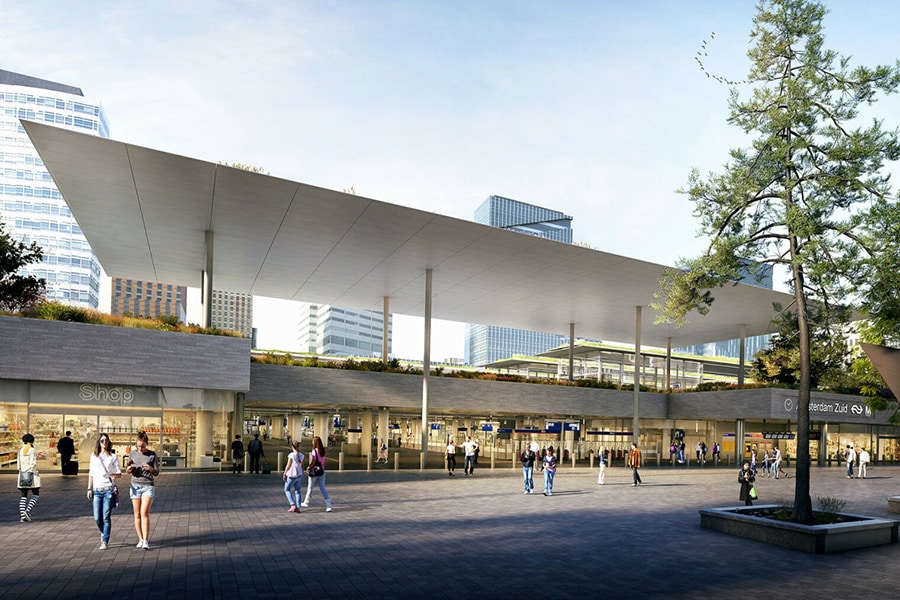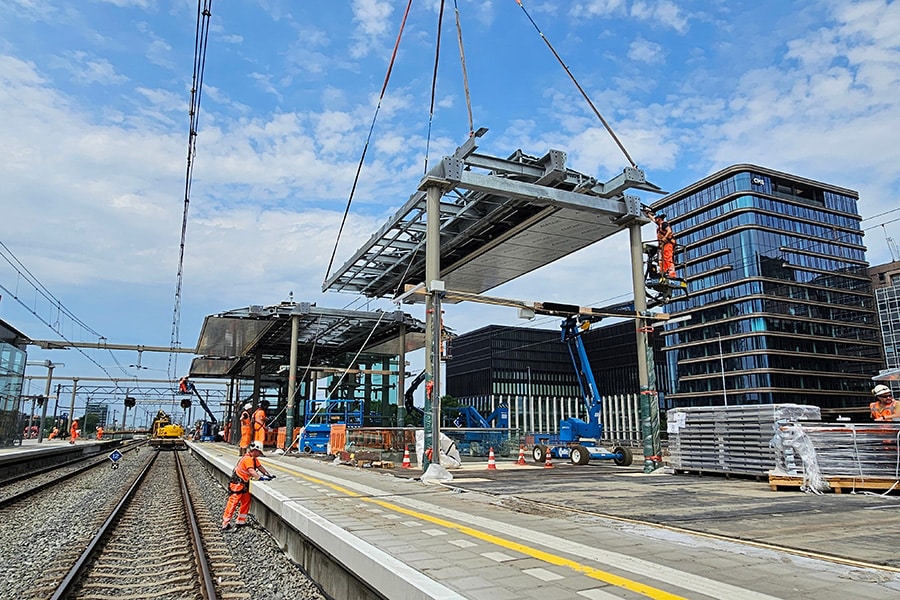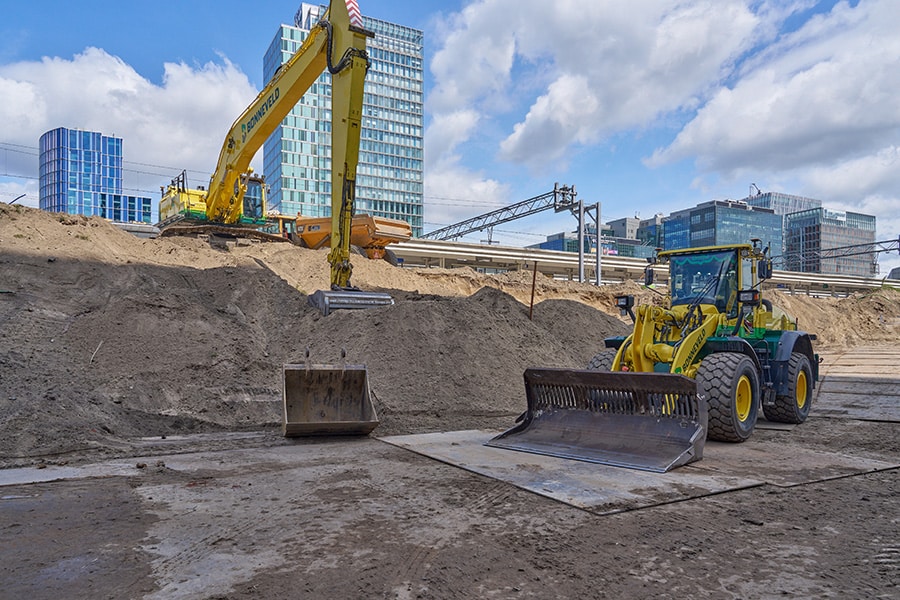
Complex groundwork under the A10 and on the Zuidas
Tight planning and close cooperation
Normally, such an out-of-service period consists of digging a hole, sliding in a tunnel and closing it again. This time the situation was more complicated: the A10 was cut into two phases, east and west, with additional activities such as carrying out ground improvement, constructing transition structures, applying EPS, and laying and leveling the sub-base for the asphalt. Speaking is Stefan Albers, technical director at Bonneveld. “The soil improvement turned out to be necessary because contamination and insufficient load-bearing soil were present under the fill layer from NAP,” he says. Working under remediation conditions and adjusting an already tight schedule made the project extra challenging. “What you take out, you also have to bring back,” says contractor Timo van Wegen. “We moved more cubic meters than anticipated, worked closer to the groundwater level and installed drains. Although the drainage was the client's responsibility, we installed the drainage and had to make sure the base was stable again.”
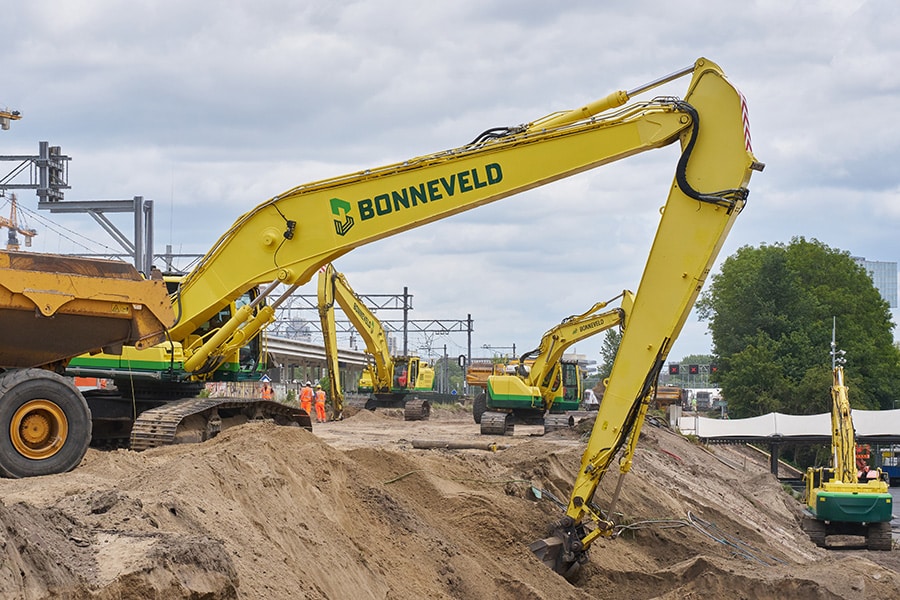
Familiar faces
Work also continued immediately after the A10 reopened. Tracks were broken out in the middle area to make room for piles and abutments. On these, the contractor was able to slide in the deck structures. “It was really working on a postage stamp,” says Van Wegen. “There was zero room for overruns or surprises, so communication was crucial to meet the schedule.” Albers adds: “It makes a huge difference that we always work with the same subcontractors. Everyone knows each other and knows what is expected of them. The points of contact from the client and our project team have also been the same from the beginning of the project, so the lines of communication are short.”
Large-scale earthmoving
In addition to the ‘agreed’ work during the decommissioning, Bonneveld also carried out additional work at Amsterdam Zuid station, under the direction of the construction consortium. Meanwhile, the construction of the Brittenpassage also continued, which involved excavating more than 30,000 cubic meters of soil under the highway. When asked about the biggest challenge on this project, it sounds unanimous: “The location. The Zuidas is a busy hub with limited space and high visibility. You are in the middle of the city, with busy approach routes, BLVC plans and travelers who continue to use the station,” says Albers. “That requires precision and flexibility.”
Bonneveld has the people and machinery to make these kinds of complex projects a success. “Whether under a railroad or a highway, with or without contaminants: our expertise lies right there,” Albers emphasizes. “On this project, we had to move up to 900 cubic meters per hour with five crawler cranes running day and night. Thanks to our extensive and motivated workforce, we can fill in that perfectly these days.” Early next year, another deck shift is planned, following the same principle. For Bonneveld, that means tight planning again, careful cooperation and full steam ahead.
